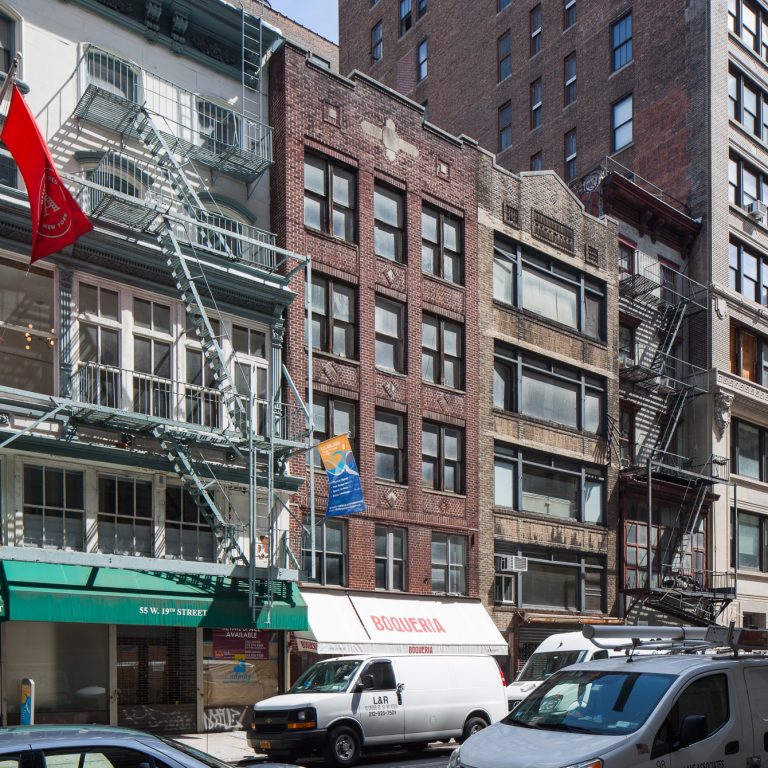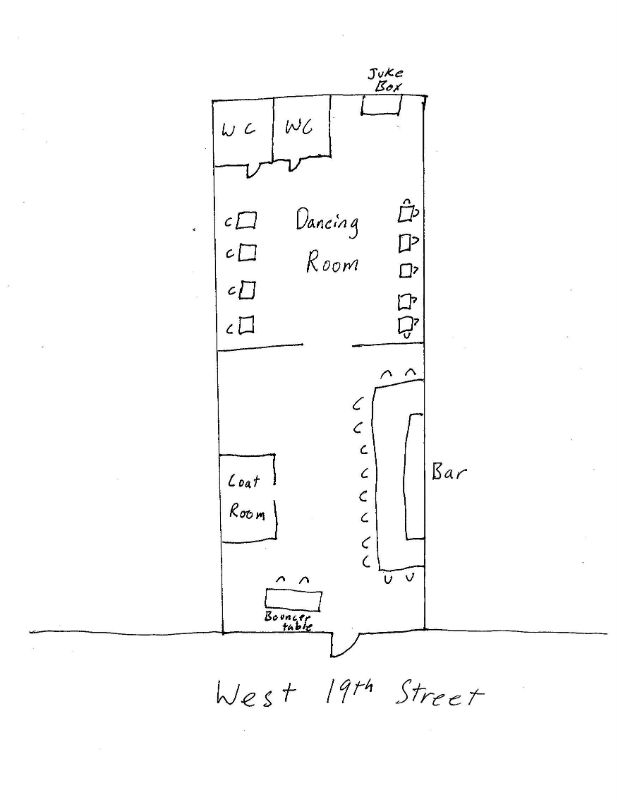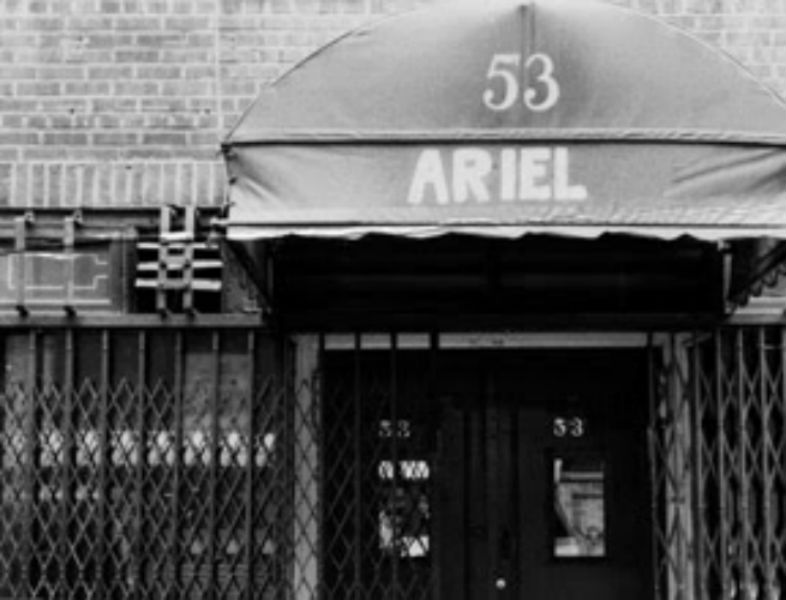overview
Gianni’s was a popular, Mafia-run lesbian bar open from 1966 until 1975.
After it closed, three other lesbian bars, Casa Maria, Silhouette, and the lesbian-owned Ariel’s operated here.
History
As the Mafia-affiliated owners were closing the Sea Colony in Greenwich Village, they were opening Gianni’s, a lesbian bar in Chelsea, which operated from 1966 to 1975. Gianni’s first drew a butch/femme, white working-class crowd that characterized the Sea Colony and other Mafia-run lesbian bars. It became more diverse and welcoming in the post-Stonewall era of the early 1970s.
Like most gay bars at the time, Gianni’s hid its identity. The front windows were painted black, there were no signs on the door, and the most illicit activity – dancing as same-sex couples – was reserved for the back room. Like at earlier lesbian bars, there was a bouncer at the door to “protect” the patrons, but also to intimidate them by pressuring them to buy drinks when they first came in. Another bouncer stood outside the bathrooms to ration out toilet paper and to make sure women went in one at a time.
Unlike at earlier lesbian bars, however, there was a slightly friendlier atmosphere at Gianni’s that got more open as the community around the bar changed. There was a free Sunday brunch every week, a tradition that continued at other lesbian bars through the 1980s. They also employed mostly lesbian bartenders who were more connected to the community. Even the patrons themselves became more welcoming. In the previous era when butch/femme roles were not only a cultural preference, but also a way of knowing if someone was really part of the community or an undercover cop, dressing in between butch or femme (called “ky-ky” or “kiki” by the butch/femme women) usually was met with hostility. [For a longer explanation of butch/femme, see the Sea Colony entry.] Patrons also rarely talked to women they did not know at the bars, because of fear that a stranger was an undercover cop. At least by the 1970s, according to Kathy Wakeham, a Gay Liberation Front member, the women who patronized Gianni’s mostly had given up butch/femme roles and talked to whomever they pleased.
According to historian Daniel Hurewitz, after Gianni’s closed in 1975, it was succeeded by two other lesbian bars, Casa Maria and Silhouette. In 1980, a lesbian couple opened the fourth lesbian bar at this location, Ariel’s, which was in business until 1984. Far more welcoming and connected to the community, it not only had a large awning with its name out front announcing its presence, but it also hosted numerous fundraisers for LGBT community organizations. They also continued Gianni’s friendly practice of free Sunday brunches. However, in 1984, the landlord decided he no longer wanted a bar in the space. The owners tried to appeal.
The court ruled that we may stay provided we do not have ‘music’ after 11pm. Not even, apparently, a jukebox.
The jukebox had been a staple of most lesbian bars since the 1950s (and continues to be today). Ariel’s closed soon after this court decision, ending the two-decade lesbian occupancy of 53 West 19th Street.
Entry by Gwendolyn Stegall, project consultant (August 2018).
NOTE: Names above in bold indicate LGBT people.
Building Information
- Architect or Builder: unknown (original structure); Burke & Olsen (new facade)
- Year Built: 1855 (original structure); 1927 (new facade)
Sources
Daniel Hurewitz, Stepping Out: Nine Walks Through New York City’s Gay and Lesbian Past (New York: Henry Holt & Co., 1997), pp. 119-120.
Gianni’s, Ariel’s and other NYC lesbian bars from the past,” Lesbian Pulp and the Lavender Universe, January 1, 2014, bit.ly/2myGvQR.
Gwen Shockey, “Ariel’s,” Gwen Shockey Fine Art, accessed July 22, 2018, bit.ly/2JKRLTj. [source of pull quote]
Karla Jay, June 28, 2018, personal interview with Gwendolyn Stegall for the NYC LGBT Historic Sites Project.
Kathy Wakeham, July 12, 2018, personal interview with Gwendolyn Stegall for the NYC LGBT Historic Sites Project.
New York City Directories (1966-1986).
Preston Mardenborough, June 4, 2018, personal interview with Gwendolyn Stegall for the NYC LGBT Historic Sites Project.
Up & Coming: Grab Bag: CLGR’s 5th Anniversary,” The Villager, June 10, 1982, p. 10.
Do you have more information about this site?
This project is enriched by your participation! Do you have your own images of this site? Or a story to share? Would you like to suggest a different historic site?


